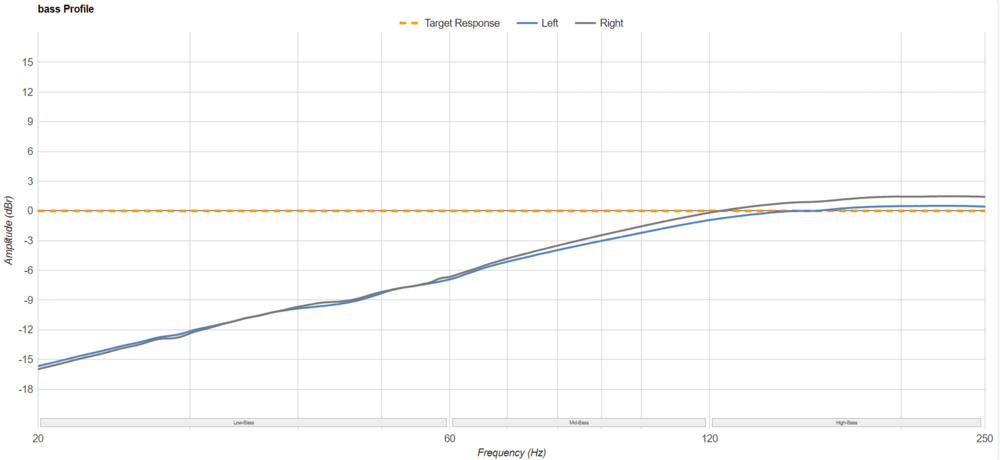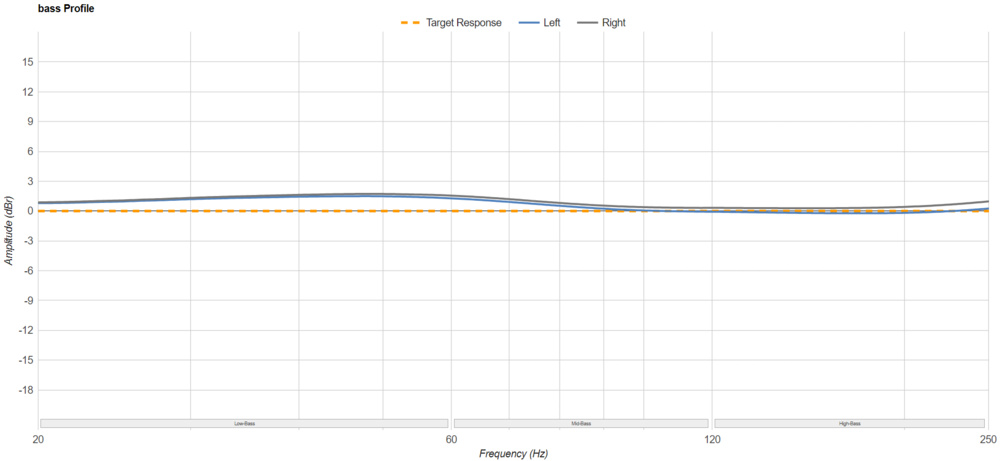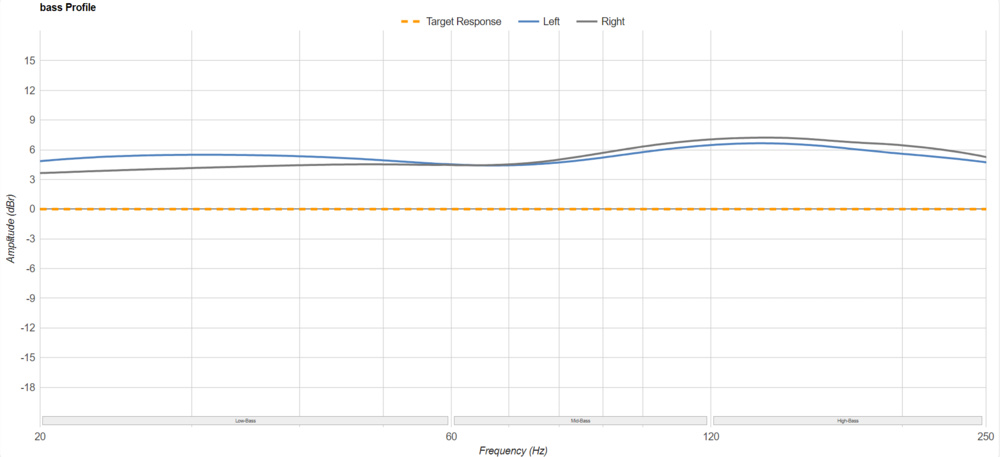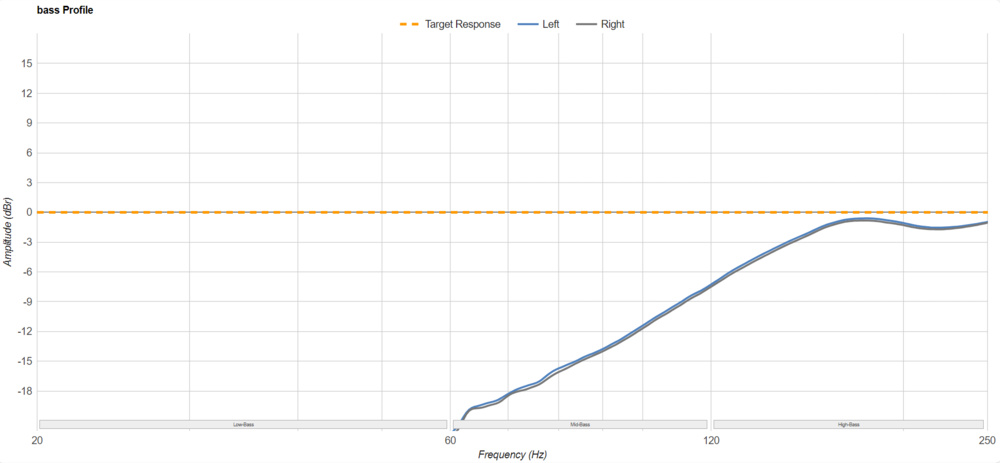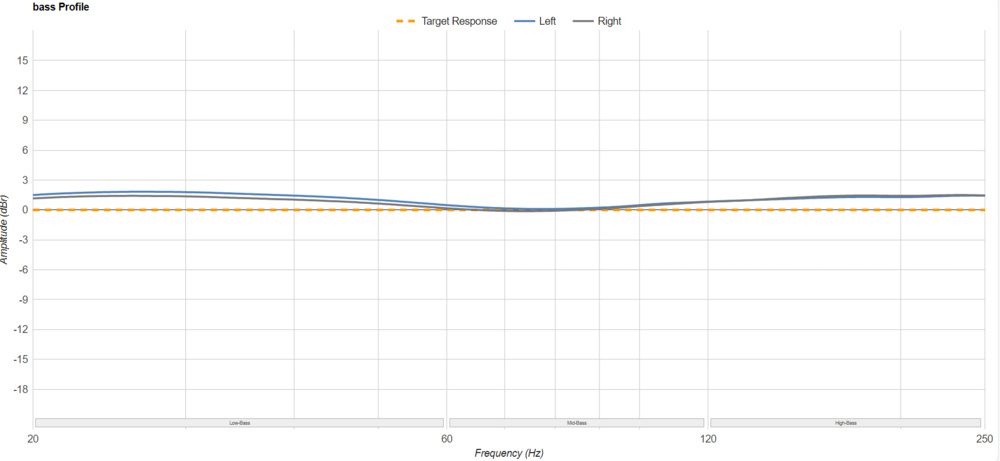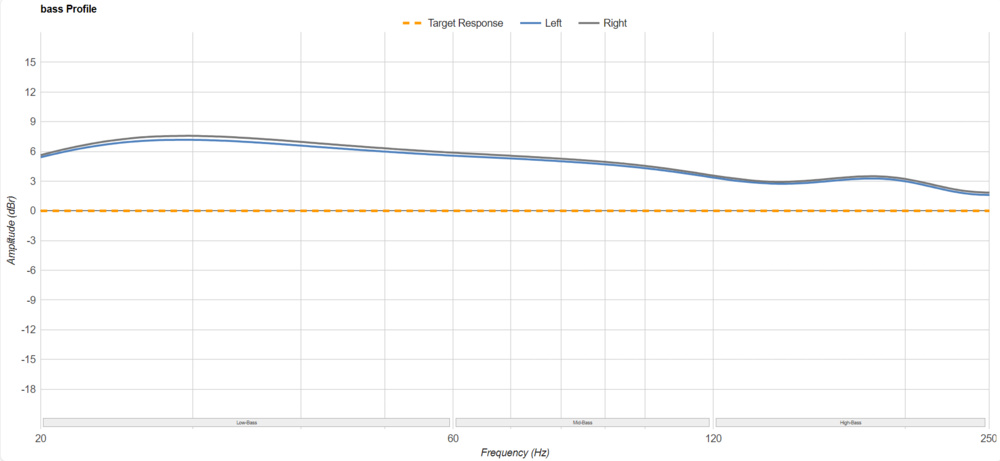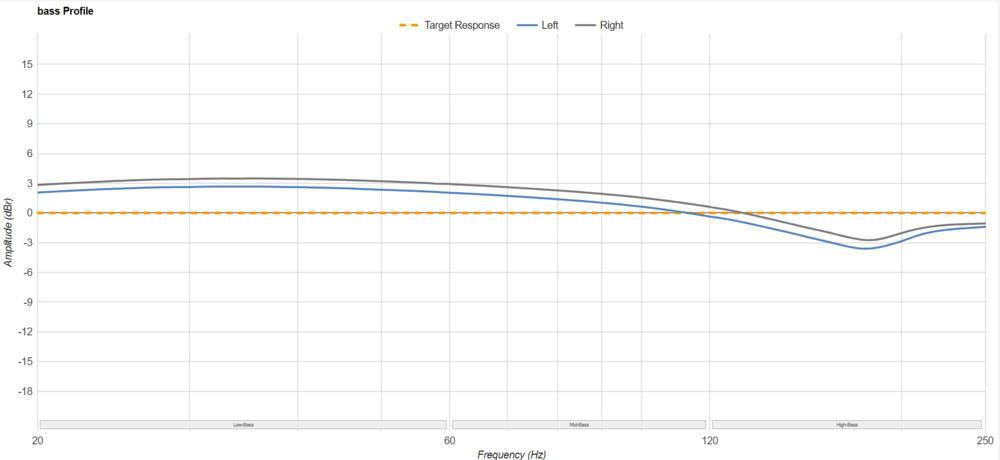Bass describes the low-end spectrum of frequency response and ranges from 20Hz to 250Hz. It's the deep and heavy tones in your music, like low rumbles, kick drums, and bass instruments. Depending on your listening taste, well-balanced bass is essential for optimal audio reproduction.
For bass performance, we measure the low bass, mid-bass, and high bass frequency response and then use these values to test for the standard error of the bass reproduction. We also use descriptive language to help conceptualize over- and underemphasized frequencies, so if you're looking to brush up on your audio terminology, you'll also want to check out our sound quality glossary.
Test results
When It Matters
Some music genres, like EDM, hip-hop, rock, and dubstep, aim to deliver a punchy, boomy sound. Other content, like movie and game sound effects, benefit from bass, which gives explosions, gunshots, and footsteps more rumble and emphasis.
While the right amount of bass can come down to preference, an over-hyped bass profile can cause the bass in some tracks to overpower the mids and highs, which may not suit everyone's listening taste. Inversely, an under-hyped bass profile will cause the bass in some tracks to sound hollow and feel lacking, especially if the tracks didn't have much bass to begin with.
At the end of the day, personal taste is important when making a selection, as different bass profiles suit different listeners. The importance of bass depends on your listening activity. Movies, for example, require more bass than podcasts or audiobooks.
Our Tests
RMS Deviation From Target
RMS Deviation From Target shows the amount of deviation of the measured bass response from our target bass response, which is a sound most people will find balanced. We consider within 4 dB of our target range a good value.
Low-Frequency Extension
Low-frequency extension (LFE) is the lowest frequency the headphones can reproduce before experiencing a dip or roll-off in response. Our LFE value represents -3 dB below the average bass level.
This test is useful for knowing the bass' depth without losing significant volume. We consider 40Hz and lower good since most recordings have little musically relevant information below 20Hz. However, a few electronic genres may have relevant information down to 10Hz. Frequencies below 40Hz are mostly felt than heard.
Since frequencies below 40Hz are very difficult to produce for small drivers, like the ones used in most headphones, making an airtight seal helps a great deal in lowering the LFE of headphones. That's why, given a proper fit and seal, most closed-back headphones (especially in-ear ones) usually have a much better LFE than open-back headphones.
Low-Bass
We calculate the low-bass value by averaging the amplitudes of each frequency within the low-bass region. We then report the final value relative to our target.
Since most of the thump and rumble in sound comes from the low-bass region, you may perceive headphones with a negative low-bass value as lacking this sound. Conversely, you may perceive headphones with a low-bass response above our target curve as having too much deep thump and rumble. Some users may prefer a bit of an elevated low bass since it could increase the headphones' visceral feel on certain tracks.
Mid-Bass
The mid-bass value, similar to low-bass, is calculated by averaging the amplitudes of each frequency within the bass region. We then report the final value relative to our target.
Since kick drums and melodic bass instruments sit in the bass region, you may perceive headphones with a negative mid-bass value as lacking kick and bass guitar/synth. Conversely, you may perceive headphones with a bass value above our target curve as having too much kick and bass guitar/synth.
High-Bass
The high-bass value, just like low bass and bass, is calculated by averaging the amplitudes of each frequency within the high-bass region. We then report the final value relative to our target.
Since the high-bass region is where warmth and fullness in sound come from, you may perceive headphones with a negative high-bass value as thin. Conversely, you may perceive headphones with a positive low-bass value as sounding warm to boomy. Of the three bass regions, the high bass is the most sensitive to overemphasis; a little excess high bass can easily muddy up the sound.
Excess high bass is very common with certain types and brands of headphones. Most closed-back in-ears show overemphasis in the high-bass (and low-mid) region, which makes their sound quite muddy. It's worth emphasizing, however, that you may still prefer this sound if you like a lot of bass.
Also, some open-back over-ears, especially the ones made by Sennheiser, have a distinct bump in the high-bass (and low-mid) region, giving them a warm and slightly muddy character. However, this added high bass can help equalize the lack of low to mid-bass in open-back headphones.
The bass range spans the lowest end of human hearing, representing everything from thumpy 808s in genres like EDM and hip-hop to rumbly sound effects in movies to the warmth and body of instruments like guitars. While preference plays a huge role in whether you'll enjoy more or less bass, there are some factors to consider when making your decision. Some headphones, like open-backs, deliver less bass than their closed-back counterparts. At the same time, popular casual-use brands like Bose and Sony tend to produce headphones with a more bassy overall sound. That said, so long as you have a good EQ, you can always raise or lower the bass to suit your needs.
